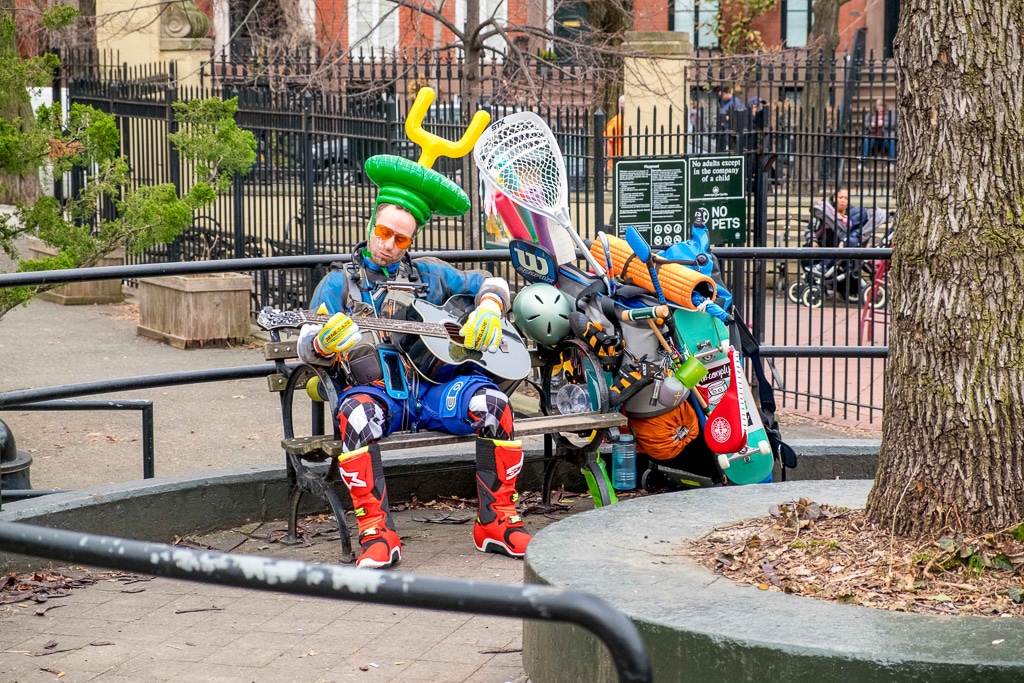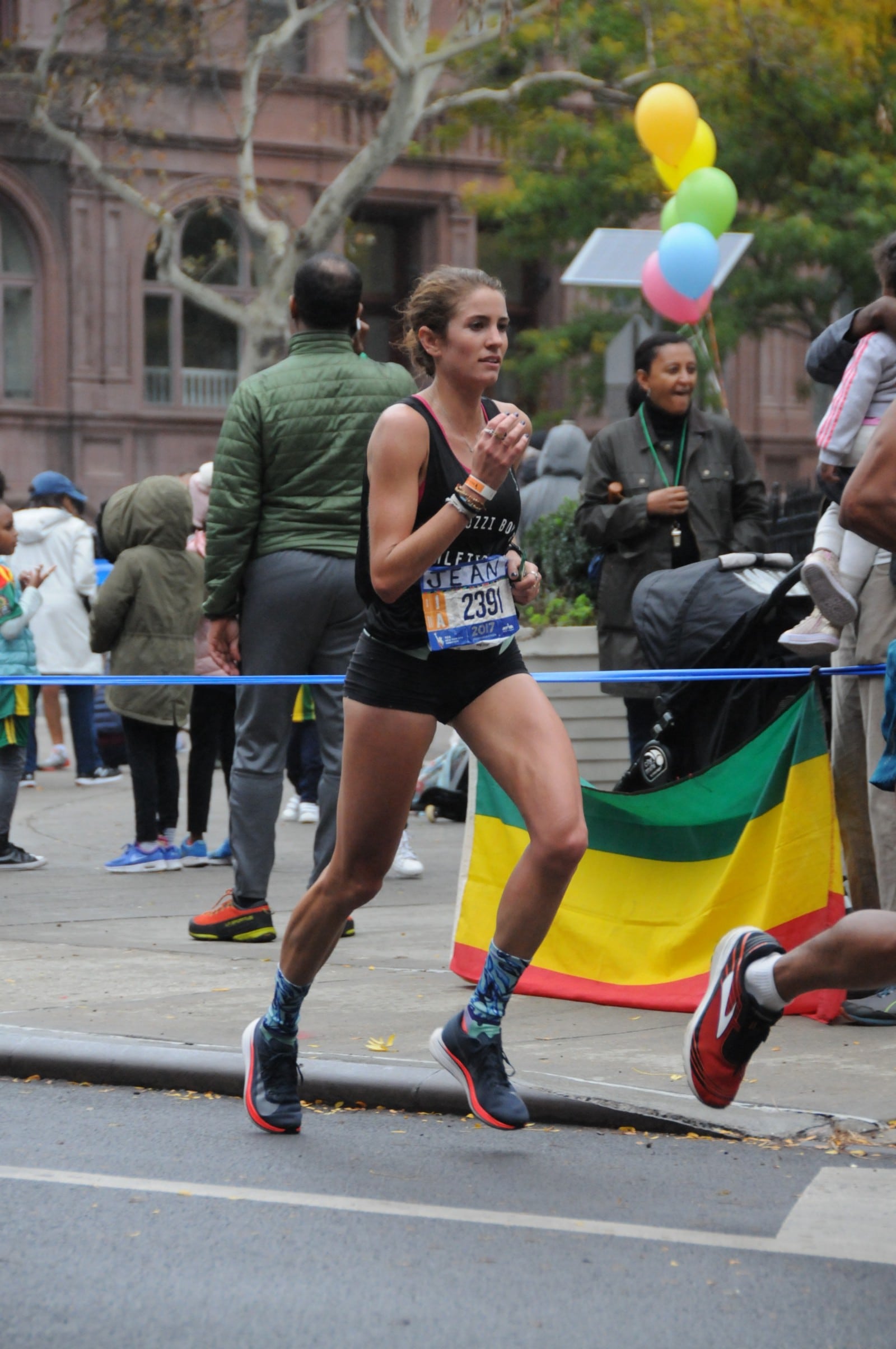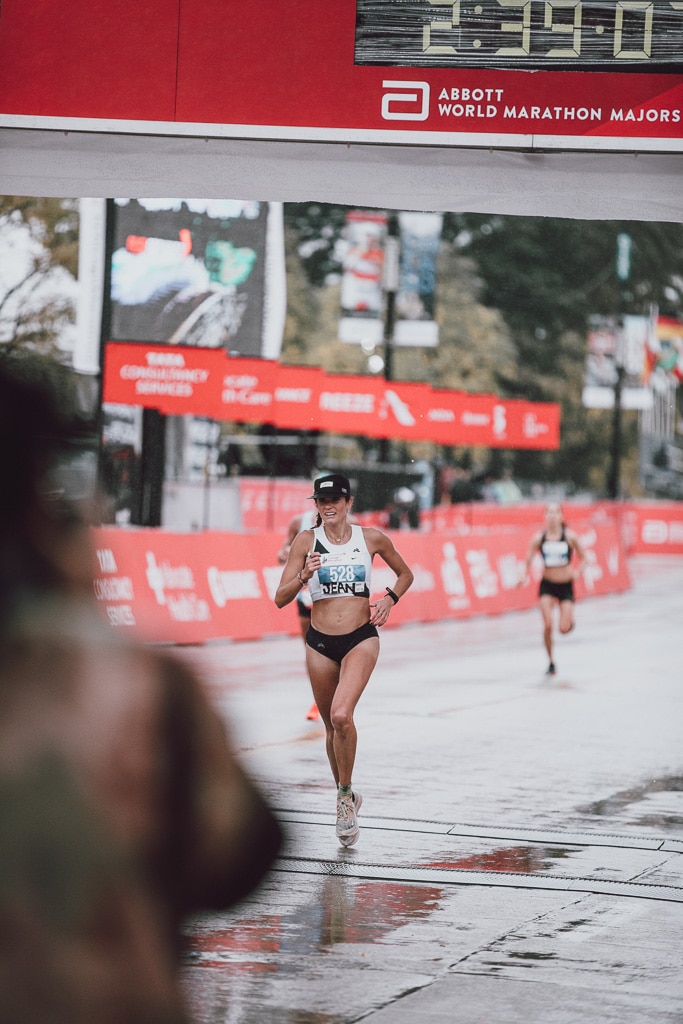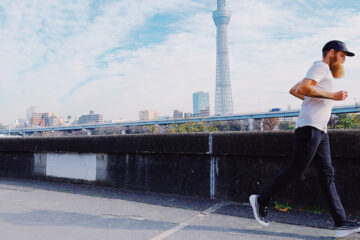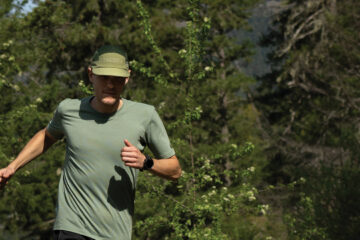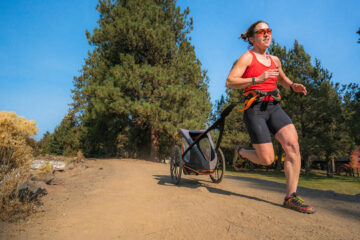Words by Jeanne Mack
Images provided by Stephen Kersh & TruTv
The day that Jon and I meet in Brooklyn, he’s dressed like a weather app guru. It seems like he knows the weather better than it knows itself. For hours that morning, an ambiguous overlap of snow and rain fell onto the streets. When Jon showed up with the perfect waterproof outer layer, an unthinkably sturdy umbrella, and warm hat, I was instantly jealous.
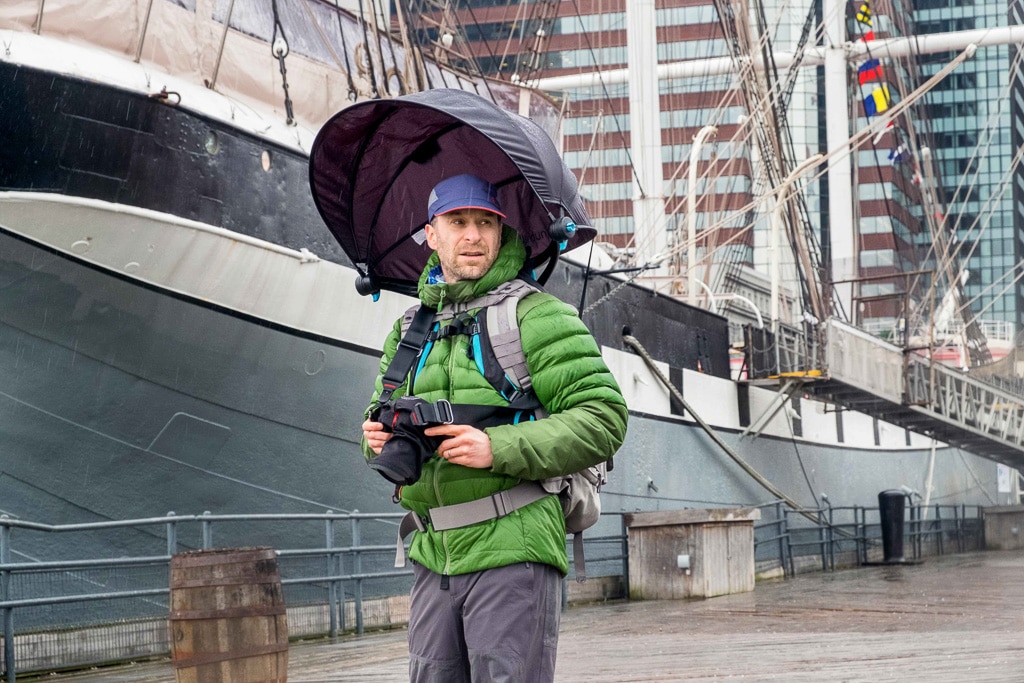
After carefully setting his accoutrements aside, the Emmy-nominated comedian, actor, writer, and Jon Glaser Loves Gear namesake explained that dressing properly is something he gets a lot of satisfaction out of. When he recently had to have a second round of some dental work done, he learned from the previous year’s mistake of overdressing.
“The first time, last year, it was winter, so I wore these big boots and wool socks. So I’m in the dentist’s chair just trying not to stress, and then, I think they gave me a little too much of the drug, so I’m starting to freak out a little bit and sweating so much and thinking about how stupid it was to wear thick wool socks and boots. So, this year when I had to go do it again for a different tooth, I wore thinner socks and then brought sandals to change into so my feet wouldn’t overheat. They thought it was weird, sure,” he shrugs, smiling.
It’s in moments like these I can see that Jon’s mockumentary style show, which focuses on gear with a capital G, is grounded in truth. Jon Glaser Loves Gear (JGLG) enters its second season with truTV this month and follows a satirical Glaser’s interest and obsession in high-tech, well designed, and/or relevant gear for any and all activities. But it’s not all an act. The real Jon also has a true fondness for good old-fashioned things. Especially running-related gear.
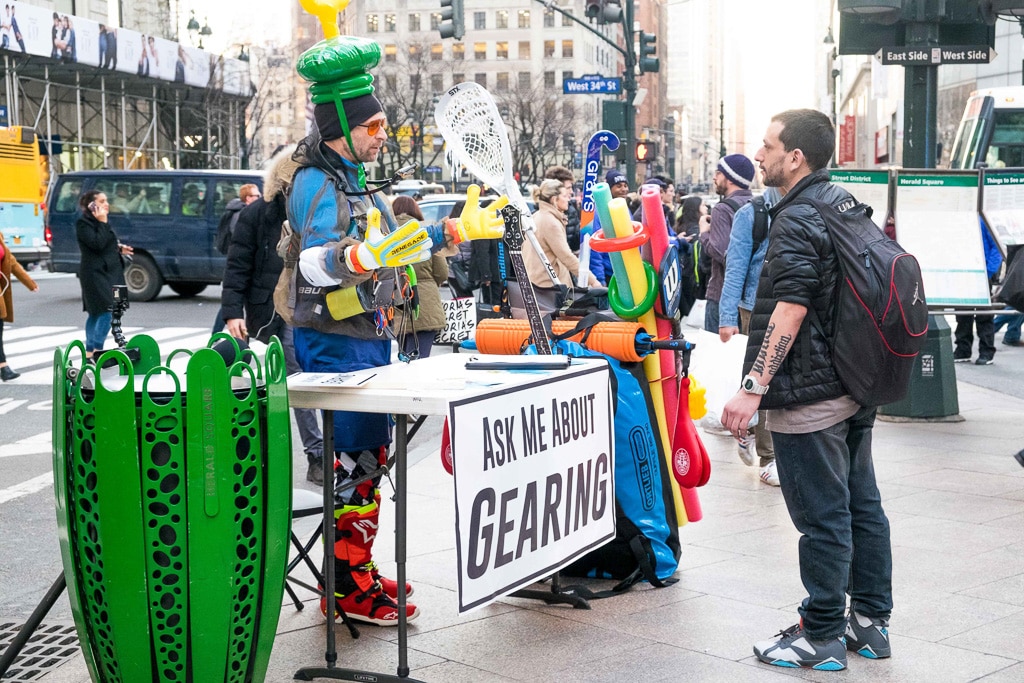
Another trope that JGLG employs is of the runner who’s over-eager to remind everyone they’ve “run the ‘thon.” And while Jon doesn’t bring it up unless prompted, he did run the New York City Marathon in 2017, and has finished two trail races since. Not having much background as a runner before the marathon, he has focused deeply on researching and evaluating which trainers might be best for him. In conversation, he quotes drop rates that I—a competitive runner since 2008—definitely don’t know off the top of my head, for different brands.
Jon tells me that the NYC Marathon became a challenge he wanted to tackle after watching runners stream by mile seven, which is right near where he lives.
“It’s genuinely thrilling to see all of those people racing. I always found it inspiring,” he recounts.
But at that time, Jon couldn’t even imagine running seven miles at once, let alone a full marathon. So it made sense to train for a half marathon before diving into a full. Before his first half, Jon built up his running from almost nothing.
When he finally finished seven miles, he admits that, “it was hard at the end. But it was so satisfying to run that distance. And then every week it was a new benchmark. I’d never run this number of miles, or that many miles. I loved the training. I liked the feeling of getting stronger and getting over the mental hurdles that came along with it all, too.”
In the end, after weeks of training, Jon ran smart and controlled, and negative split his half marathon.
“Oh wow!” I say, and as someone who has never not gone out too fast in a race, I’m genuinely impressed. “Did you end up negative splitting the full marathon too, after that?”
Jon shakes his head with his eyebrows raised, as if remembering a traumatic event, and says, “The full marathon was such a different experience. Holy shit. For the full, I’d heard that taking 60-90 seconds off your half marathon pace was a realistic goal. So I thought, okay, 10:30s. But in my head, I wanted stupidly, to get close to 10:00 minute pace. Anyway, I really tried to go slow at the beginning of the race, but even when I was going easy, like really easy, I was going too fast. Around 9:45s. And it just feels so strange to go that slow, it doesn’t feel natural.”
“I know exactly what you mean,” I tell him. “And that year it was raining, too,” I remember out loud.
“Right. But you can’t control that. It was one of those—shit I should’ve worn my three-quarter tights, I wish I’d done this, I wish I’d worn that type of mornings. I was thinking: I don’t want to be too warm, i think it’s going to stop raining, I think I’m going to be too warm in these. But in the end, I had to say, fuck it, just go,” Jon explains.
And with that explanation of his race day thought process, the elephant in the room (which in our case is a small, but busy ramen restaurant) has become visible again. Gear.
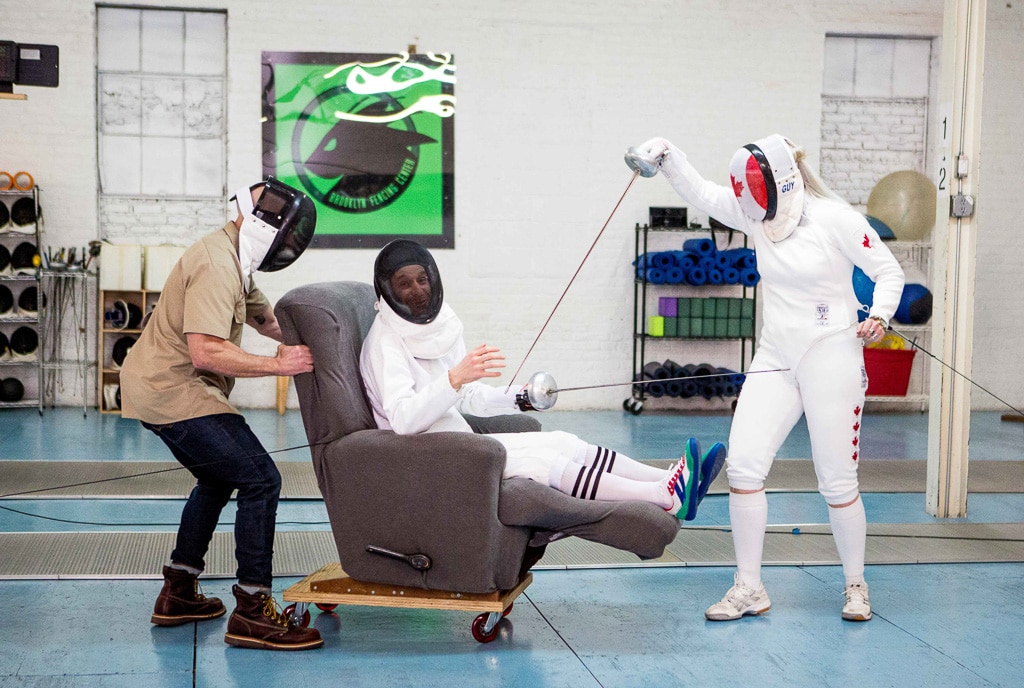
We discuss how gear, at its core, is at its best when it allows you to just enjoy yourself, and I decide to ask, point-blank, “in JGLG, your character gets a little obsessed, or maybe even addicted to gear itself. How close is that storyline to reality?”
“Yeah, it’s definitely a case of having to make myself get rid of things. Sometimes it’s easy because I have too much in one specific category of stuff. But, other times it’s really hard. Like: these five pairs of trail running shoes are all very different and I like them all equally for different reasons. It becomes about that,” Jon answers.
“I’m sure it’s especially hard in New York City,” I offer.
“I really think that’s the only reason it’s an issue. If we had a house with a big garage and/or basement, it wouldn’t be a problem at all.”
“Or would it be more of an issue?”
“True, maybe I’d just collect even more things. It reminds me of that George Carlin bit about how a house is just a place keep your stuff while you go out and get more stuff.”
About halfway through our conversation, I start to realize that Gear as a subject is much deeper than I’d ever considered before. Jon describes how in seventh grade, he got his first pair of metal spikes for Little League baseball with, “That was a thrill. I had these all white Puma spikes. White on white. The feel of the metal cleats as I was taking them to the ground. I felt cool, I felt older. I definitely felt like a pro.”
And I see that the beauty of gear lies somewhere near its ability to transform whoever is using it into a better version of themselves, or at least reveal that better version that was already there.
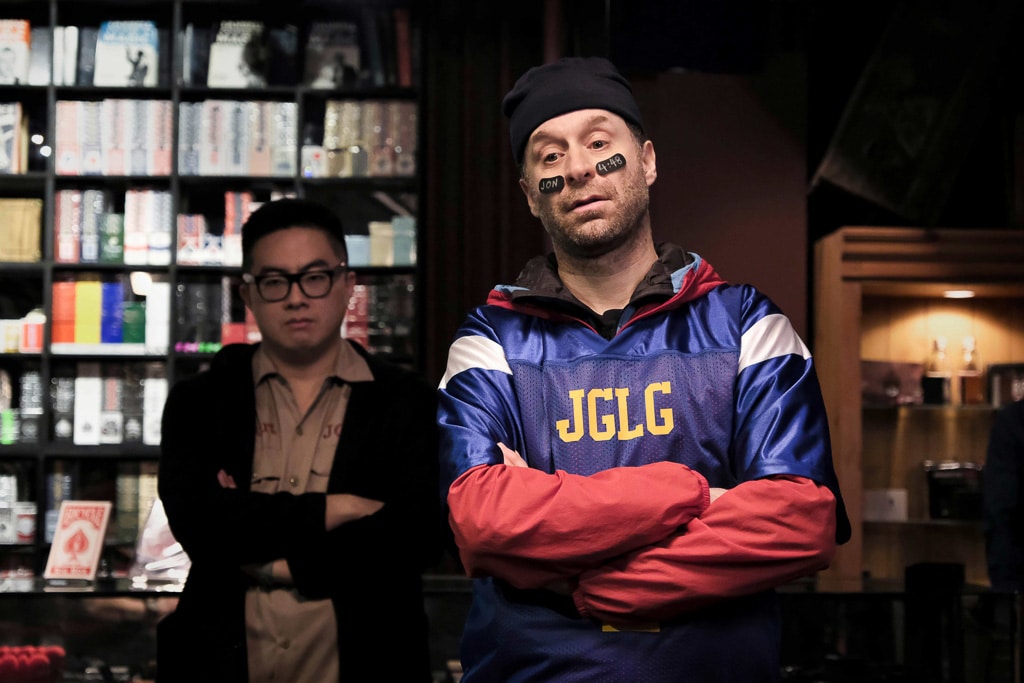
I think Jon and I agree that in a less glamorous way, the act of running does this, too. I didn’t ask him about it during the interview, but in my mind: running gives us a vehicle to attempt to better ourselves, or showcase slight improvements.
I think Jon would generally be on board with this way of thinking, because he told me that after feeling terrible, and completely cramping up for the last few miles of the 2017 marathon, he’s already thinking about the next time he can try it again.
In response to my question of whether he’s interested in attempting any other marathons in the future, Jon says:
“Yes, I think somewhere international could be cool. But I also really want to run New York again because it’s a direct comparison. Just to see if I could do better.”
I almost feel compelled to lean in, over the bowl of steaming salted edamame, to warn him that this is how running hooks you. That the desire to have a direct comparison with your former performances and former selves never gets entirely fulfilled.
But, now that Jon’s regularly running three to four times a week and considering ways he might improve his fitness with hill workouts or cross-training, I’m sure he’s quickly figuring that all out for himself.


